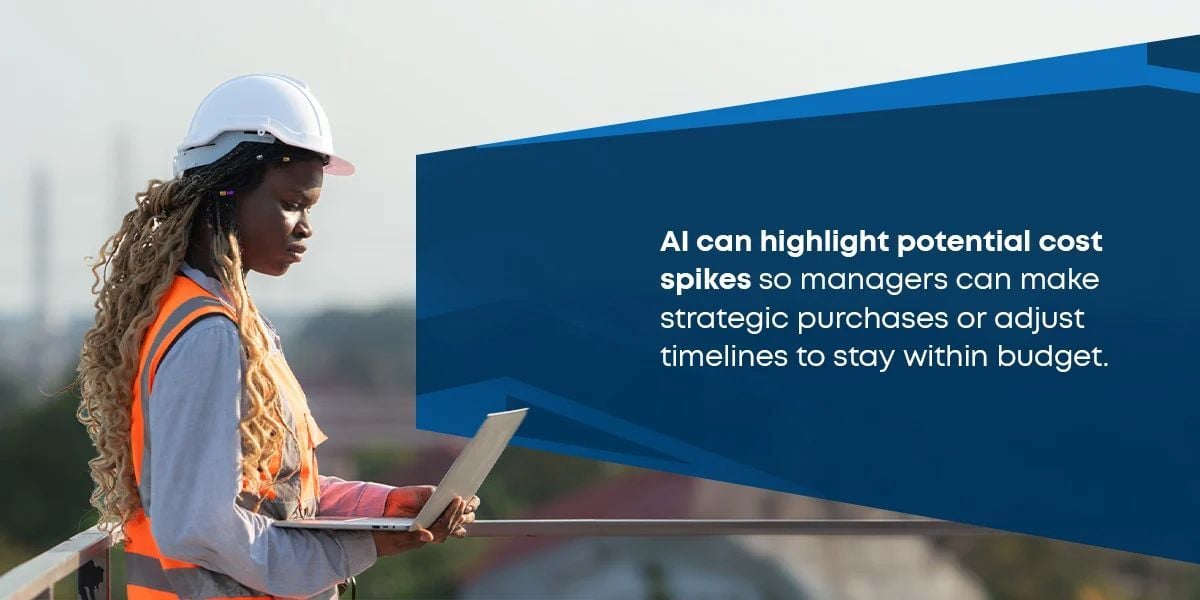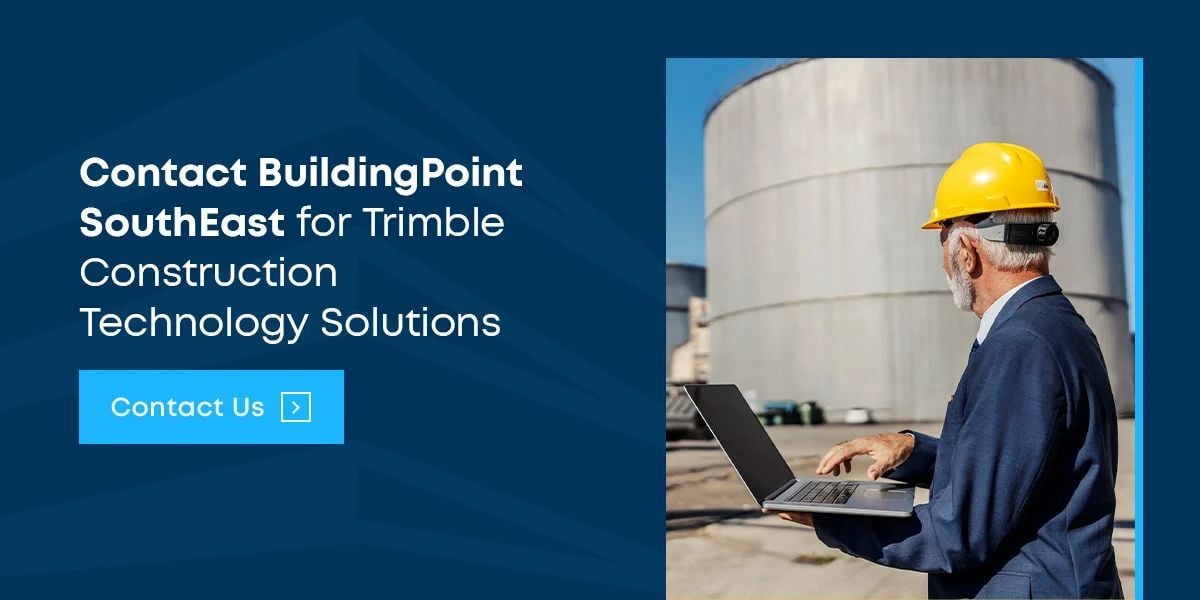The construction industry faces a unique set of daily challenges — keeping projects on time, managing resources efficiently and adhering to workplace safety. Traditional methods often leave little room for error, yet unforeseen delays, safety risks and cost overruns can disrupt the best-laid plans. As such, some construction professionals are turning to technology to address these pain points.
Artificial intelligence (AI) and machine learning are helping construction teams solve long-standing issues by performing tasks typically requiring human intelligence and retrieving data to improve. AI-powered solutions can improve productivity on jobsites and support complex planning.
This post discusses the benefits of AI and machine learning and provides an overview of examples of AI in construction.
1. Improves Jobsite Productivity
AI and machine learning in construction streamline productivity by automating repetitive tasks. These tools can analyze and cross-reference data points, helping managers monitor the progress of each project phase more accurately. Managers can use construction management software to consolidate real-time data to get updates and insights about task completion rates on their devices.
Another example of the technology in action is automated machinery. AI-powered bulldozers, excavators and other heavy equipment can perform tasks autonomously based on pre-loaded plans. These machines can work longer hours without fatigue and are less prone to errors. Autonomous machines help maintain a consistent pace of work, reduce waste and enable crews to increase speed and accuracy.
2. AI for Construction Safety
AI in construction supports safety on a jobsite by proactively identifying and mitigating potential risks. Through real-time data collection from drones, cameras and wearable devices, AI makes it easier to monitor worker movement, equipment usage and environmental conditions.
This wealth of data allows AI to perform predictive analysis by spotting patterns that might lead to accidents and alert managers to take corrective action before a minor issue escalates. AI also supports preventive maintenance by identifying potential issues with machinery so that operators or maintenance crews can take necessary actions to keep equipment in good working condition and reduce downtime.
Construction management software can also streamline compliance with safety regulations. It enables managers to track security metrics and maintain digital compliance records, lightening the administrative load so they can focus on overseeing the project.
3. Better Decision-Making
Receiving vast amounts of information is beneficial for decision-making. However, decision-makers simply can't analyze and interpret it all fast enough. These tools bridge the gap by processing big data in construction to extract patterns, trends and actionable insights. Big data provides the information, while AI translates this information into clear recommendations, forecasts and alerts. This gives construction teams a deeper understanding of their projects so they can make informed decisions to maximize resources.
4. Reduces Costs and Prevents Overruns

Since AI-driven systems analyze extensive datasets, project managers can make realistic budgets and anticipate expenses. AI can highlight potential cost spikes so managers can make strategic purchases or adjust timelines to stay within budget. The tool can help pinpoint areas of inefficiency, like material use, by analyzing how materials are ordered and recommending adjustments to reduce waste.
Labor is also one of the largest costs on a construction site. The technology can analyze workforce productivity and identify opportunities to facilitate labor allocations by suggesting ways to consolidate tasks or redeploy workers to the areas most needed.
For example, AI-powered robots and drones can be deployed for tasks such as surveying land, transporting material or even performing routine inspections. This may turn a two-person task into a one-person job, free up resources and reduce labor costs while maintaining quality control.
5. Enables Better Project Design and Planning
Generative design tools like building information modeling (BIM) allow project teams to validate designs by creating detailed digital models of physical spaces. These models can simulate construction scenarios, enabling teams to visualize each project phase before breaking ground. This process helps identify potential issues and improves decision-making by testing multiple design choices in a virtual environment.
BIM systems also foster collaboration by centralizing project data, which makes it accessible in real time to architects, engineers and contractors. Shared access empowers team members to stay aligned with progress and challenges.
Beyond BIM, integrating 3D laser scanning technology offers additional accuracy. This field layout technology generates digital models that mirror real-world environments, helping project teams detect potential site challenges and make necessary design adjustments. These models' advanced range, accuracy and faster scan times simplify data capture and analysis.
6. Simplifies Supply Chain and Logistics
Since material deliveries and equipment availability affect project timelines, budgets and productivity, AI systems can analyze data to forecast potential bottlenecks. AI can predict which resources might be scarce or when certain stages may fall behind. This allows managers to plan ahead and secure critical resources or seek alternative suppliers to prevent slowdowns.
The tools also help construction teams coordinate logistics by monitoring shipments and identifying any delays. If a delay is detected, AI can provide an alternative solution, such as rerouting deliveries, so the project remains on schedule. Additionally, AI can improve procurement processes by analyzing supplier performance and price trends. They achieve this by assessing data from past purchases, supplier reliability and current market trends so managers can make more informed procurement decisions.
7. Assists in Post-Construction
Once a building is completed, the focus shifts to monitoring its ongoing performance. Whether it's assessing energy efficiency, structural integrity or heating, ventilation and air conditioning (HVAC) system functionality, AI can monitor building systems and alert property managers to any anomalies. Machine learning models analyze data through sensors embedded in building infrastructure and predict when a piece of equipment is likely to fail.
For instance, machine learning can track energy usage patterns and detect inefficiencies, such as systems that are consuming more energy than expected. This enables building managers to take corrective actions or schedule maintenance to prevent expensive emergency repairs.
The Future of AI in Construction
The AI-driven construction market is projected to expand with an expected compound annual growth rate (CAGR) of approximately 36% from 2024 to 2031. By 2031, the market value is forecast to reach around USD $14.21 billion. The need for improved project management and execution spurs this growth. These technologies are being applied in the field, project and risk management with a focus on improving safety measures, reducing costs and boosting workflows.
Companies like IBM and Trimble are already investing in AI to automate processes, manage schedules and reduce project risks. AI's role is also expanding into heavy construction, which might assist with equipment usage, streamlining supply chains and managing labor.
Although AI will automate certain tasks, these tools are designed to augment workers' capabilities. These advancements may make it easier for construction companies to forego repetitive tasks, address areas of inefficiency and promote smarter, more sustainable construction practices. To stay ahead of the curve, employers can focus on reskilling and upskilling the existing workforce.

Contact BuildingPoint SouthEast for Trimble Construction Technology Solutions
BuildingPoint SouthEast understands the power of AI and machine learning in the construction industry. As an exclusive Trimble partner, we provide innovative solutions that help you reduce risks and streamline project management. Our expertise in Trimble AI-powered technologies helps you stay ahead of the competition and maximize efficiency and productivity.
We offer layout and scanning equipment, such as Trimble 3D laser scanners and Trimble CrewSight, which can provide data analysis and enable smarter decision-making. These solutions make connecting the office and the field easier so you can achieve your goals. With offices and Trimble-certified technical representatives in your region, we're always available to assist you. We'll demonstrate, deliver and train your team to make the most of these solutions. We also provide on-site support so everything runs smoothly. Contact us today to learn more.




